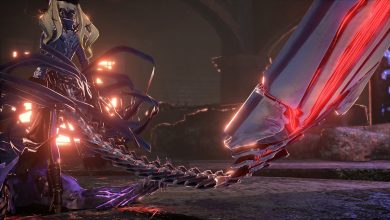Sssassins Creed Origins Game Lion vs Hippopotamus Review
Here is a roundup of all the major new releases for Xbox One this week.
Metroid is a Nintendo institution, one that dates almost as far back as the company’s console business. The series includes phenomenal games like Super Metroid and Metroid Prime, two games that frequently appear on “best of” lists. But Metroid has been in a funk for the past decade and losing favor along the way. Fans don’t want experimental spin-offs like Metroid Prime: Federation Force; they want to explore alien worlds as Samus Aran, hunt for high-tech equipment, and use it to dig even deeper into the unknown. Finally, with Metroid: Samus Returns, that call has been answered.
Why it took Nintendo so long to get to this point is anyone’s guess, but Samus Returns is so good that it almost doesn’t matter. A reimagining of the oft-maligned GameBoy game, Metroid II: The Return of Samus, Samus Returns is classic Metroid at heart.
As in the 1991 monochromatic classic, you hunt down dozens of powerful Metroids on planet SR 388 in an effort to eradicate the bioweapon species and keep them out of evil’s hands. However, two key changes have occurred: the map has been greatly expanded and reshaped to more closely resemble what you might find in Super Metroid, and combat is more of a priority than ever. The latter is an effect of Nintendo bringing on Mercury Steam–the most recent developer to work on Castlevania–to develop the game. Thankfully (and most importantly), Samus Returns feels like a Nintendo-made Metroid, but it’s still easy to spot Mercury Steam’s influence–for the better.
Maize, that crazy-sounding, and cool-looking corn game launched on September 12. Other notable new releases this week include Don’t Starve Together: Console Edition (September 13) and Baja: Edge of Control HD (September 14). You can see a rundown of new Xbox One releases below, as compiled by Microsoft.
The most immediate contribution that you see is Samus’ new parry action, a first for the series that allows you to counterattack and stun a rushing opponent. In turn, common enemies are more aggressive than usual, more liable to seek you out then wait for you to make the first move. Though parrying feels a bit strange at first as it brings your momentum to a temporary halt, you quickly learn the proper timing and understand how it fits into your repertoire, and when to rely on it.
You can also fire in any direction now thanks to the 3DS’ analog stick. The same input is used for movement, which means you can really only fire at a few angles while running forward, but all you need to do when surrounded by enemies is hold another button to stand your ground and aim freely. Samus’ newfound flexibility and physicality makes her feel like an even more capable hero, and makes the moment-to-moment exploration more lively than usual.
 Considering that Metroid is more or less the foundation of so-called “Metroidvanias,” games where you wander massive environments, poking and prodding walls and ceilings to reveal secret chambers and items, it’s both curious and exciting when you unlock Samus’ Scan Pulse ability. Triggering a pulse both reveals map layouts and information (including hidden passages) and temporarily highlights breakable objects in your environment. On one hand, this capability robs you of the unique joy that comes from isolating the one false brick in a wall, but it also means that you no longer need to waste time looking for secrets that may not exist.
Considering that Metroid is more or less the foundation of so-called “Metroidvanias,” games where you wander massive environments, poking and prodding walls and ceilings to reveal secret chambers and items, it’s both curious and exciting when you unlock Samus’ Scan Pulse ability. Triggering a pulse both reveals map layouts and information (including hidden passages) and temporarily highlights breakable objects in your environment. On one hand, this capability robs you of the unique joy that comes from isolating the one false brick in a wall, but it also means that you no longer need to waste time looking for secrets that may not exist.
To account for the bit of old-school joy that’s now taken away (unless you opt not to scan your environment), Samus Returns makes the process of acquiring items you’ve located more difficult than usual. You’re now often challenged to quickly juggle weapons, abilities, and maneuvers, without faltering, to reach items picked up during scans. This may involve slowing down time and activating Samus’ Lightning Armor to negate damage while moving along a wall with electrified plants (two abilities that share a resource meter), morphing into a ball and laying bombs to destroy a brick, and finally sliding through the gap before it regenerates. There’s a healthy balance between easy pickups and these puzzling scenarios, and compared to other 2D Metroids, it’s far more fulfilling to work smarter, rather than harder, to reach 100% item completion–the real Metroid endgame.
For much of Samus Returns, that goal feels attainable thanks to your scanner. Sometimes you need to obtain a new piece of equipment or two before you can sol This Post Author
For much of Samus Returns, that goal feels attainable thanks to your scanner. Sometimes you need to obtain a new piece of equipment or two before you can solve an item-related puzzle, but that’s to be expected, and a handy multicolor marking system allows you to note where a specific weapon may be useful down the road. And by and large the game does a great job of providing insight into Samus’ ever-growing capabilities, giving you the information you need to overcome specific obstacles. There is, however, one isolated blemish in this regard: a traversal maneuver with inconsistent behavior, depending on a very specific circumstance that’s never mentioned or hinted at. Whether by design or by accident, this exception flies in the face of the game’s otherwise clear and informative nature, and proves frustrating in a few specific and punishing locations.
Captain Cold Injustice 2 Review
A long - 9.7
Intelligently revives - 9.6
Contributes to the series' lore - 9.6
Streamlines exploration - 9.4
Combat - 9.5
Instance of inconsistent logic - 1.7
8.3
SUPERB
Metroid is a Nintendo institution, one that dates almost as far back as the company's console business.







































